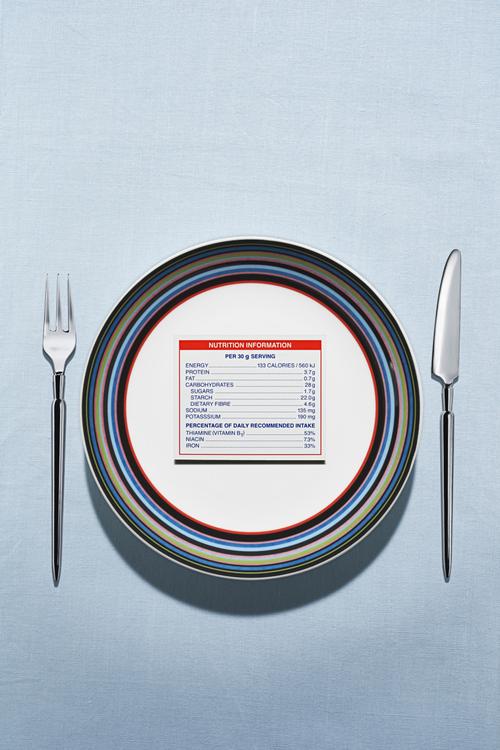
If you’re trying to slim down, here’s what NOT to do.
If “shed some pounds” is on your resolution list for next year, you’re certainly not the only one. But are you doing all you can to achieve your goals, or are you inadvertently sabotaging them? Take this recent finding, for instance: A study from Cornell University researchers showed that going more than a week without stepping on the scale led to dieters gaining weight, while more frequent weigh-ins were associated with losing weight.
“Often people think they’re doing the right thing (i.e. not weighing themselves daily) but they may actually be making a mistake that prevents weight loss,” study author Brian Wansink, PhD, director of the Cornell Food and Brand Lab and author of “Slim By Design: Mindless Eating Solutions for Everyday Life,” tells Yahoo Health.
Are you making other weight-loss mistakes without even realizing it? We asked the experts to share some of the most common diet trip-ups — and how to avoid them.
Mistake No. 1: Thinking Fat-Free = Automatically Healthy
Foods touting their fat-free status may be free of, well, fat, but that doesn’t make them good for your weight-loss efforts. “Many fat-free foods contain lots of sugar to make up for the taste of the missing fat, so they can be high in calories,” Lisa R. Young, PhD, RD, adjunct professor of nutrition, food studies and public health at New York University and author of “The Portion Teller: Smartsize Your Way to Permanent Weight Loss,” tells Yahoo Health. Plus, these foods may not satisfy your hunger — so you tend to eat more of them. A better bet? Stick to a small portion of the real thing (with fat) and savor every bite.
Mistake No. 2: Using Artificial Sweeteners
These substances — including stevia, saccharin, sugar alcohols, aspartame, and the like — may seem like a good weight-loss tool because they tend to be lower in calories than sugar — or free of them completely. “But they are designed to be excessively sweet — up to hundreds of times sweeter than table sugar,” Julieanna Hever, M.S., R.D., C.P.T, author of The Complete Idiot’s Guide to Plant-Based Nutrition and host of the wellness talk show series “What Would Julieanna Do?,” explains to Yahoo Health. “This makes your taste buds require a heightened level of sweetness to fulfill their cravings and perpetuates a sugar addiction.” Remedy this mistake by switching to whole food sweeteners such as date paste and pure maple syrup.
Mistake No. 3: Setting Unrealistic Goals
One of the quintessential New Year’s resolutions is to swear off sweets or banish bread. But in reality, it’s hard to stick to such black-and-white rules. “When you set unrealistic goals and don’t achieve them, you end up putting on extra pounds on top of the ones you wanted to lose in the first place,” personal trainer Mary Ann Browning, president of Browning’s Fitness, explains to Yahoo Health. Avoid this by setting goals around your clothes — not the number on the scale. Or, break big goals into smaller chunks. For example: Instead of saying you’ll never eat dessert again, skip sweets during the week and indulge in one or two treats on the weekend. “Eating healthy is a way of life,” Browning says, but it’s not a life sentence!
Mistake No. 4: Not Eating Fruit
Not filling up that fruit bowl is a huge diet no-no. “Many people skip fruit when they’re trying to lose weight because they think it contains sugar and is fattening,” says Young. Yes, fruit has sugar, but it’s not sugar that’s been refined and processed — “it’s natural sugar,” she adds. Plus, fruit also has fiber — which helps keep you full longer — and lots of water — which keeps it low-calorie. “I always say, no one got fat from eating bananas,” says Young.
Mistake No. 5: Looking For A Magic Bullet
If losing weight were as easy as popping a pill, we’d all look like Gisele. (OK, maybe not Gisele, but we’d be thin!) Despite what some talk shows or spam emails claim, there’s simply no magical supplement, potion, powder, or remedy that will make you lose weight. “Any compound that takes you away from your own intuitive signals is temporary and can be dangerous,” says Hever. “I subscribe to the age-old adage that if it sounds too good to be true, walk away.” The only magic bullet? Good old exercise and eating well.
Mistake No. 6: Underestimating Portion Size
While there are some foods that are considered good for weight loss, eating too much of them can sabotage these efforts. For example, a half-cup to a cup serving of brown rice is full of fiber and healthy nutrients. But eating three cups in one sitting can rack up the calorie count. “People don’t pay attention to how much they’re eating and larger portions are harder to estimate,” says Young. “Dieters may pour what they think is one cup cereal, but it’s actually more like three cups.” While it doesn’t help that today’s restaurant portions are bigger than ever, at home, you can measure out your portions. And after a while, you’ll be able to eyeball them. “Visuals also help,” adds Young. For example, a 3 ounce serving of meat is about the size of your palm, or a deck of cards.
Mistake No. 7: Having An All-Or-Nothing Attitude
“When people make one mistake they feel bad and just eat everything in sight,” says Browning. “Remember: We’re born as sports cars. Just because you get a flat tire doesn’t mean you let the car sit and rust away. You call AAA and get if fixed.” The goal is to treat your body the same way by getting back on track ASAP. If you over-eat at one meal or snack, “have a little less at the next meal or do some extra cardio,” says Browning. Then move on. We all make mistakes; it’s how you recover from them that matters – and affects your weight-loss.
Written by Michele Bender
















